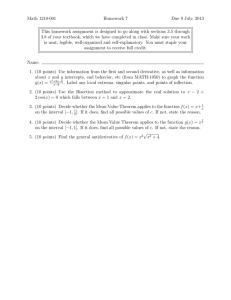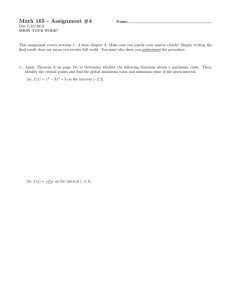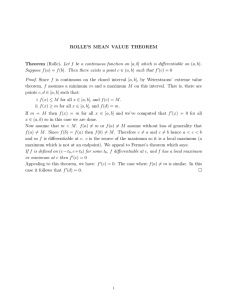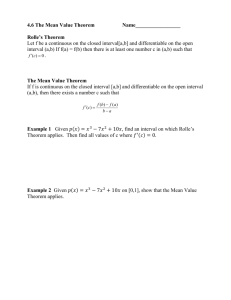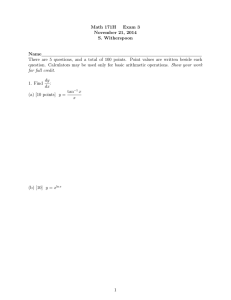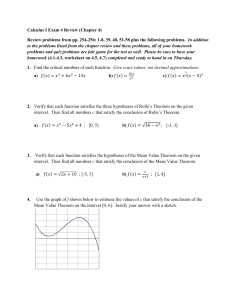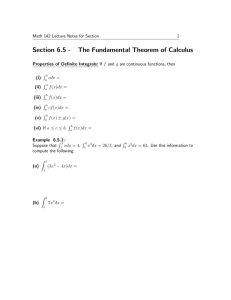maximum f
advertisement
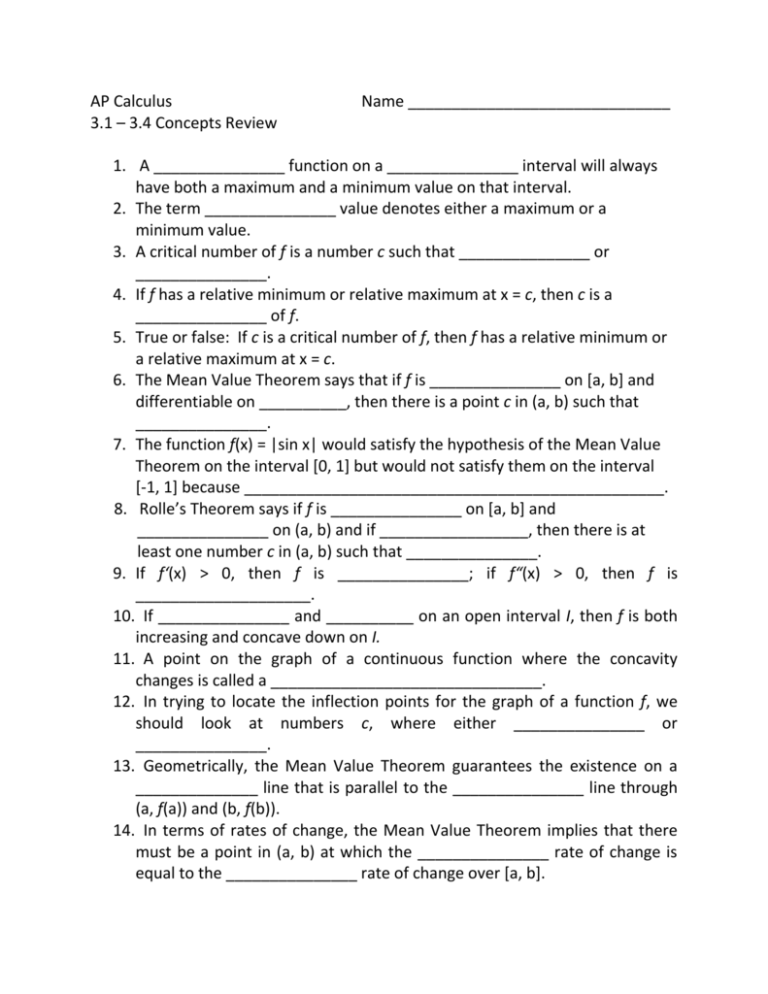
AP Calculus 3.1 – 3.4 Concepts Review Name ______________________________ 1. A _______________ function on a _______________ interval will always have both a maximum and a minimum value on that interval. 2. The term _______________ value denotes either a maximum or a minimum value. 3. A critical number of f is a number c such that _______________ or _______________. 4. If f has a relative minimum or relative maximum at x = c, then c is a _______________ of f. 5. True or false: If c is a critical number of f, then f has a relative minimum or a relative maximum at x = c. 6. The Mean Value Theorem says that if f is _______________ on [a, b] and differentiable on __________, then there is a point c in (a, b) such that _______________. 7. The function f(x) = |sin x| would satisfy the hypothesis of the Mean Value Theorem on the interval [0, 1] but would not satisfy them on the interval [-1, 1] because ________________________________________________. 8. Rolle’s Theorem says if f is _______________ on [a, b] and _______________ on (a, b) and if _________________, then there is at least one number c in (a, b) such that _______________. 9. If f‘(x) > 0, then f is _______________; if f“(x) > 0, then f is ____________________. 10. If _______________ and __________ on an open interval I, then f is both increasing and concave down on I. 11. A point on the graph of a continuous function where the concavity changes is called a _______________________________. 12. In trying to locate the inflection points for the graph of a function f, we should look at numbers c, where either _______________ or _______________. 13. Geometrically, the Mean Value Theorem guarantees the existence on a ______________ line that is parallel to the _______________ line through (a, f(a)) and (b, f(b)). 14. In terms of rates of change, the Mean Value Theorem implies that there must be a point in (a, b) at which the _______________ rate of change is equal to the _______________ rate of change over [a, b]. 15. If f‘(c) = 0 and f“(c) > 0, then f(c) is a ______________________________. 16. If f‘(c) = 0 and f“(c) < 0, then f(c) is a ______________________________. 17. If f‘(c) = 0 and f“(c) = 0, then ____________________________________.

